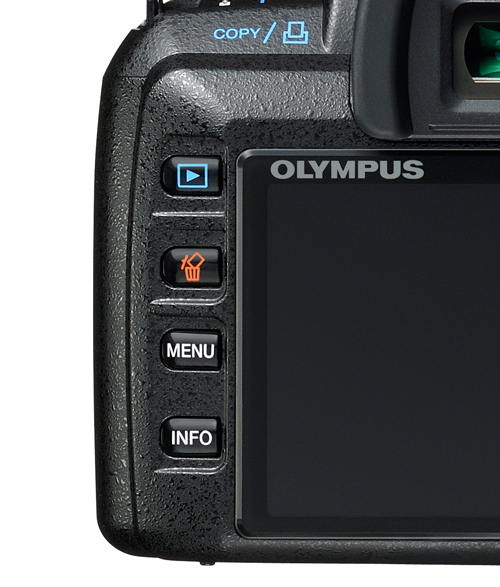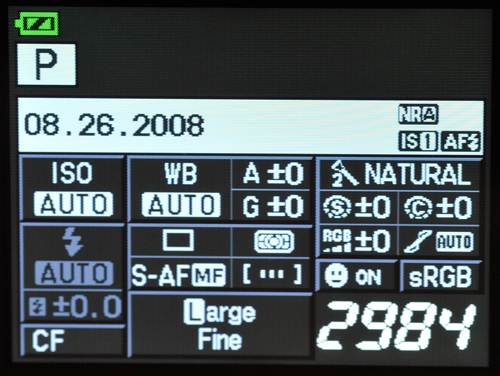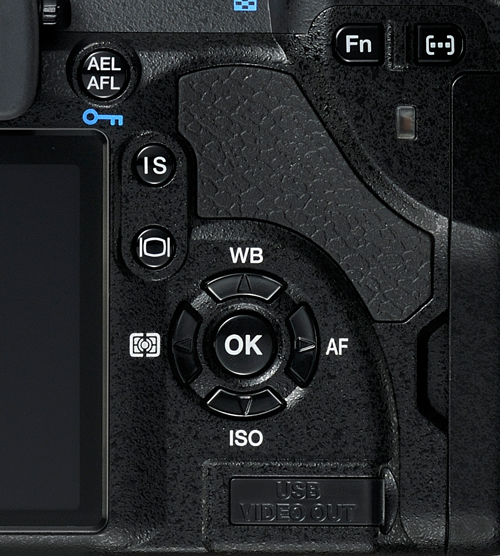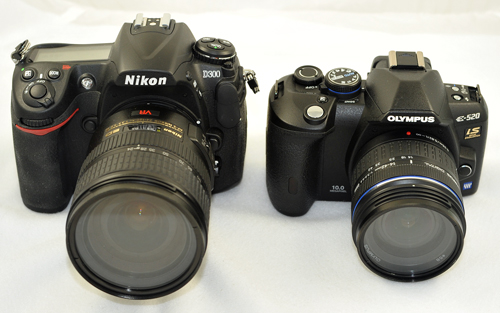Olympus E-520: Update to a Top Seller
by Wesley Fink on August 26, 2008 3:00 AM EST- Posted in
- Digital Camera
Field Notes

The biggest disappointment from our perspective was Olympus' decision to continue the 3-point AF module of previous Olympus models. The E-520 does seem to be a bit faster in AF, but it is not really competitive in the number of sensors, AF speed, or tracking abilities with the Canon XS or Sony A300. The E-520 is so competent in other areas that we are left to wonder why Olympus did not bring some version of the E-3 AF technology to the updated E-520. Similarly the viewfinder remains far too tunnel-like, which is saying quite a lot in a class of entry-level DSLR APS-C cameras - none of which is particularly outstanding in the viewfinder department. The more expensive Canon XSi and cheaper Sony A200 both have better viewfinders than any of these entry models do.
Olympus has also continued the viewfinder info display on the right side of the viewfinder. Since the 4/3 cameras feature a narrower frame than the 3:2 cameras that mimic the 35mm format (every other camera in this class), there is certainly extra room on the side. However, the tunnel view makes it difficult to see info on the side without adjusting your eye side to side. A larger image magnification closer to the 1.10 on the E-3 and info below the viewfinder would better suit us.
Image Quality: Olympus seems to have borrowed most from the image processing capabilities of the E-3, which is a very good thing. The E-520 is much improved in controlling noise over the E-510 it replaces. Images to ISO 800 are very good and ISO 1600 is now more like the excellent E-3. The E-3 is subjectively one of the most accurate cameras in reproducing color that we have tested, and the E-520 is now much closer in image quality to the E-3. Take a close look at the image noise comparison with the E-3 on page 7.
Customization: The menus are complex, but that is mostly because you can customize almost anything on the E-520. It is without doubt the most flexible entry-level DSLR among the group detailed on page 3. The Canon XS does not even have a real spot metering capability, where the E-520 has three spot modes - normal, highlight, and shadow. Almost every button can be reassigned if you choose. There is no easily accessible auto focus to manual focus switch, but you won't really miss it. Just choose the AF+MF modes and after pushing the right "AF" button in the joy-pad and you gain the ability to manually focus any lens to touch up the AF selected focus - without any special buttons or procedures. This is like making every lens a ring USM motor on a Canon, which the kit lens for the XS/XSi certainly is not.
Ease of Use: Some have criticized the complexity of the Olympus E-520 menus, but it is our opinion that the real issue is that Olympus takes a different approach to menu logic than Canon and Nikon. The E-520 menus will be instantly comfortable to any former Olympus user. If you are not used to Canon or Nikon already the menu logic will quickly make sense to you.


New users, expert users and even those who don't like the menus can work completely from the Info screen. Click the Info button at the lower left of the screen. Hit OK and use the joy pad to move around the Info screen until you find what you want to adjust. Press OK again to move into adjusting the selected parameter, move to your choice with the arrow keys, and press OK to select.

You can also instantly select ISO, metering mode, White Balance, or AF Mode by pressing any of those labeled keys at the four direction points on the joy pad. There are also IS and Live View buttons for those options.
Olympus provides more adjustments and more customization that any comparable entry camera. Many users will appreciate that feature. If the menus are intimidating, stick to the buttons and Info menu. They are easy for anyone to use.
Handling: Perhaps this should be called ergonomics, but considering how small the E-520 actually is, it is much easier to handle than the similarly small Canon XS/XSi or Nikon D60. The wider, less tall form factor made holding the E-520 easier for us. However, the Canon XSi/XS with a battery grip takes those cameras into a new category as handling improves dramatically. The E-520 and Nikon D60 lack a battery grip option. As a camera alone, the E-520 handles best. The Sony A200/A300/A350 and Pentax K200D are larger and heavier cameras. Those who find the Canon, Nikon, or Olympus entry cameras too small may prefer the Sony or Pentax.

Size and Weight: This is a picture of the E-520 next to the popular Nikon D300 APS-C prosumer model with a 24-120mm VR lens. This is to illustrate how incredibly small the E-520 really is.

The E-520 is also available as a two-lens kit with the very small 40-150mm (80-300MM) lens. These two lenses cover the 35mm equivalent of 28-300mm in two tiny lenses that are highly regarded for their optical quality. Those who complain that 4/3 isn't really smaller need to examine an E-520 two-lens kit beside similar offerings from any other camera maker. If you want to pocket the E-520 or E-420, you can choose the tiny 25mm (50mm equivalent) f2.8 pancake lens.










12 Comments
View All Comments
melgross - Thursday, August 28, 2008 - link
Better than any of THEIR previous models. That doesn't make it a best seller.araczynski - Tuesday, August 26, 2008 - link
i'll need to come back here to read up on this again when i'm in the market for a new slr in the next year, hopefully this isn't all old news by then.